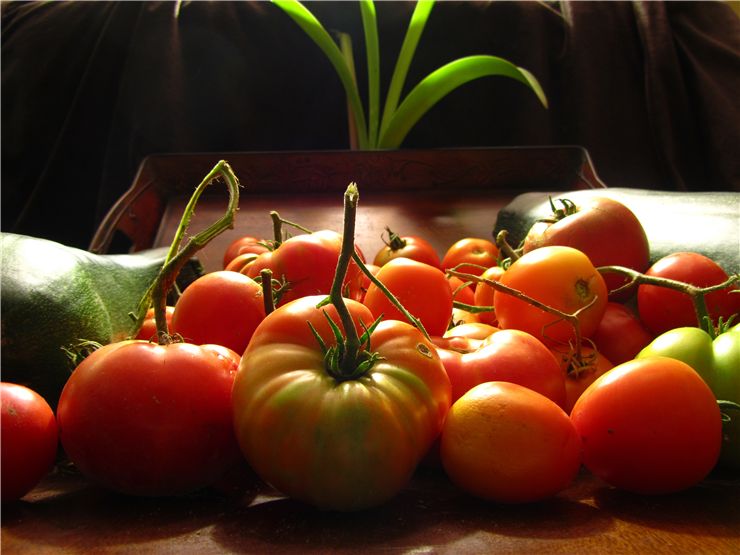History of Tomatoes
Tomato is a vegetable whose road through history was not easy and filled with numerous misconceptions and roadblocks. Finally in the last few centuries this South American plant managed to spread all across the world, becoming one of the best know food ingredients and one of the most beloved vegetables (even though technically its classified as a fruit). Selective breeding managed to refine tomato into very nutritious state, filled with vitamin A, C, E, antioxidants, and more.
The exact origin of Tomato plant is not known, although it is speculated that it evolved from the prehistoric plant Nighshade over millions of years ago in South America (together with potato, tobacco and chili peppers) and slowly moved to north until it was domesticated in the lands of Mesoamerica between Mexico and northern Costa Rica. This land was a home of several advanced Pre-Columbian society who flourished there until arrival of Europeans in the Age of Discovery. During 500 BC, one of those cultures managed to domesticate tomato and integrate it into their cuisine. That culture was Aztecs. From that point on, tomato slowly spread across the central and South America, somewhere being used as a food, but somewhere also being used as a hallucinogenic (a use that will later on be a cause of many misconceptions about this vegetable).

The first European contact with tomato came with Christopher Columbus who possibly encountered it in 1493, but it was Spanish conquistador Hernán Cortés who first saw the potential of this plant in the sacked city of Aztec city of Tenochtítlan and took its seeds back to Europe. There, seeing that tomato could grow without a problem in a warm Mediterranean climate, Spanish government started encouraging its production in both Europe and its distant colonies. As early as 1540s tomato started being produced in Spanish fields, and was used regularly as a common food in early 17th century. Other European countries did not adopt tomato immediately. For example, even though Italian nobility and scientists found out about tomato from 1548, (which is now famous for their tomato and ketchup industry), they used it only as a tabletop decoration fruit until late 17th and early 18th century. They cherished their beauty, and experimented with selective breeding, managing to create tomatoes of many colors and shapes. Tomato received similar fate in England, where it was introduced in 1597, but it remained viewed as unhealthy, poisonous and unfit to eat in both England and its North American colonies. That changed in mid-18th century after many advances in selective breeding from Spain and Italy.
In early 19th century tomato finally arrived in Asia. It arrived there under the guidance of British consul in Syria John Barker who directed first cultivation efforts. By mid-19th century, tomato gained much popularity and started being used widely in Syria, Iran and China.
Modern age of commercially grown tomato started with the efforts of Alexander W. Livingston, American botanist and scientist who dedicated much of his life on upgrading tomato with selective breeding into the most commonly known form we know today. His 1870s breed called Paragon became instant success in the North America, kick-starring the large tomato industry and approval from public.
In 2009, worldwide tomato production rose to 158.3 million tons, surpassing the previous year by 3.7%. The largest producers were China with 24% of world production, followed by United States, Turkey, India, Egypt and Italy.
